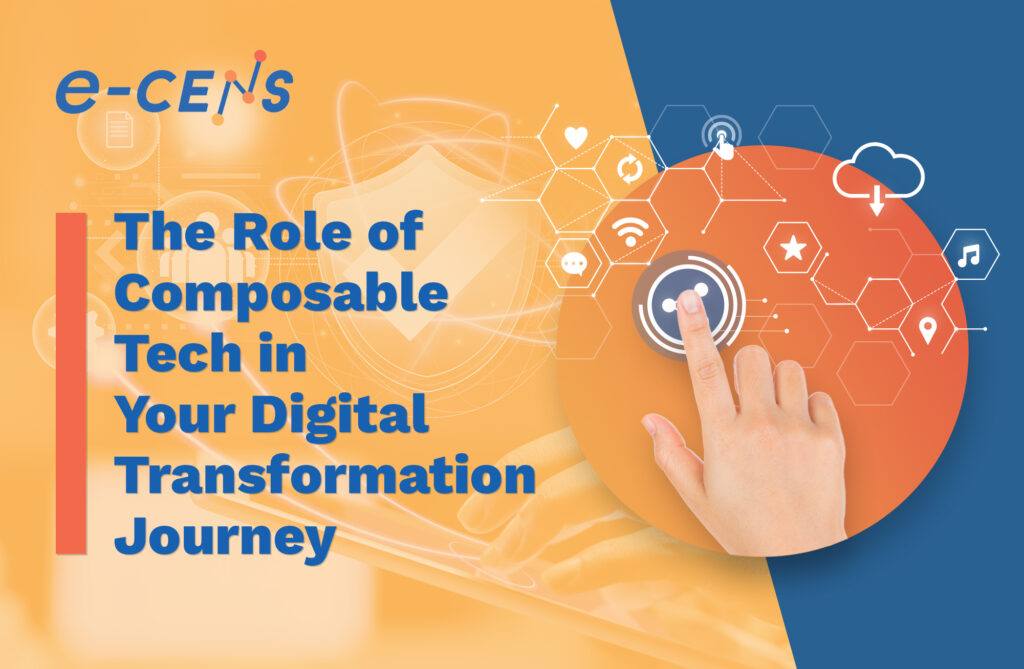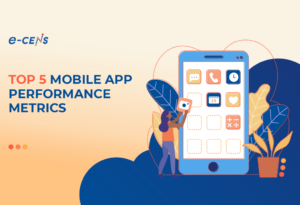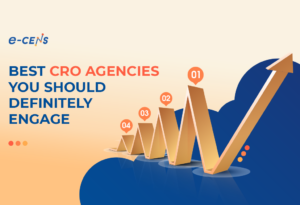
Composability and composable architecture are buzzwords with a lot of currency in the world of martech. The number of solutions using the label composable and the volume of content available on the subject matter proliferates daily. In this post, we offer our point of view on composable architecture from the digital transformation perspective.
Infrastructure decisions and technology solution commitments play a defining role in digital transformation initiatives, so it is important to consider the potential benefits and challenges of adopting a composable architecture.
Digital maturity requires the development of more cohesive integration between technology, data, processes, and people across your digital enterprise — with specific actionable end goals that typically include some or all of the following:
- 360 view of your customers
- Integrated 1st-party data strategy for media activation and measurement
- Customer engagement and customer experience orchestration
- Better personalization, and recommendation automation & optimization
- More cohesive, multi-moment customer communication, experience, service, and support delivery across the customer life cycle
If digital maturity is a strategic goal for organizations (hint, it should be), then digital transformation is the process of intentional organizational change that realigns an organization from its current state of digital maturity to a more sophisticated one.
Digital transformation initiatives typically revolve around four broad pillars: technology, data, processes, and people. Because the goal is increased digital maturity, each of these pillars has a significant holistic impact on each other. Here is where the composable versus monolithic infrastructure decision can have a defining impact on your journey.
What is composable technology?

Let’s unpack the meaning of composable as a general concept and the implications for companies that commit to composable infrastructure. We will also point to specific examples of composable solutions related to digital transformation and the world of martech.
The basic idea behind composable technology is nothing new. As Scott Brinker recently observed, “Composability is already everywhere in martech today”. But its ubiquity has not stopped it from becoming one of the trending buzzwords of the season where martech and digital experience are concerned, so let’s break down the reason it endures.
Scott Brinker defines composable quite broadly, and, within his four-box schema, considers data-centric solutions vs. app-workflow centric and enterprise/technical vs. individual/non-technical. Not surprisingly, we end up with a spectrum that includes everything from spreadsheets (that literally combine or ‘compose’ disparate data sources) to customer data platforms (CDPs), digital experience platforms (DXPs), and reusable plug-and-play code libraries.
Through the lens of digital transformation and digital maturity, it makes sense to narrow the scope and subset Brinker’s broad definition; while fully acknowledging that he is fundamentally correct that composability is already everywhere.
Composability as a solution design principle — and the growing number of platforms positioning themselves as composable — reflects a paradigm shift away from product ‘suites’ or fully baked all-in-one solutions. At its heart, composable is about committing to designing an overall solution built around best-in-breed components (or ‘best-for-me’ as some will more agnostically call it because it is more important to have the best tool for your need than the market leading technology in most cases) that do not have their own baked-in front-end UI or end-user experience. The obvious advantage to this approach from a digital transformation perspective is that you can bring together exactly the tools you need to serve your business needs around cloud-based data warehouses, e-commerce engine, digital experience, customer engagement, media activation, customer data, and you can build the front-end experience and integration tie-ins exactly as you see fit.
One of the leading emergent solution standards was developed and advanced by the MACH Alliance. This open standard has gained traction among e-commerce brands in particular, though certainly not exclusively in that context. Unpacking the acronym, MACH encapsulates a solution architecture philosophy focused on Microservices (M), API-first (A), Cloud-native SaaS (C), and Headless (H) foundations.
Microservices are applications or services that serve a specific individual function and that are “independently developed, deployed, and managed.” This is a critical part of the composable philosophy. In contrast to simply headless platforms, in which front- and back-end functions are decoupled, in the fully composable world, all functions are decoupled, allowing maximum flexibility.
API-first ensures that all functionality is available via an API. This may seem like a small matter, but when you consider something as simple as serving product recommendations or personalized content on your website, it represents a significant improvement. It amounts to dropping a potentially large, preconfigured, styled and relatively inflexible content block into a web-page or email template with layouts and other key functionality already applied or perhaps rather just pulling in structured blobs of data, such as product ID, image URLs, and clickthrough URLs, and then giving your web designer and front-end developer full control over how to present those recommendations within the design and workflow the website’s or other digital asset’s presentation layer.
A commitment to Cloud-native SaaS leans heavily on the inherent scalability of cloud infrastructure as well as the ability to ensure individual component functionality is automatically up to date. Of course, you need to test and validate any time there is a change to components of your stack; however, if the basic principles of composable solution design are adhered to — and if you utilize process/governance frameworks, such as data contracts — you should never have component systems pushing changes to production that violate the API protocols in place and the agreed upon formatting, structure, schema, and rules for data sharing provided by your data contracts.
In and of itself, headless does not equate to composable, but they are closely related. Having headless solutions is crucial because it allows you to decouple the front-end presentation and interactivity layers from the back-end systems and is a key factor in the flexibility and true composability of your end solution.
One thing that may not be so obvious about going composable is that it is a very tech and developer-centric approach to solution design. You must ensure strong alignment between your development and database groups and your e-commerce, marketing, CRM/customer engagement, and customer experience teams. The inherent flexibility of composable solutions is also the very reason you need a really solid solution architecture that accounts for the various integration points and front-end design requirements you need to solve to really deliver.
In terms of digital transformation, the most promising and innovative areas where composable technology is gaining traction are on the CDP and digital experience platform (DXP) fronts. Upgrading or changing to composable solutions for these two critical areas of your digital enterprise can have significant implications and benefits when done right. These two areas also illustrate the point that when it comes to principles of composability and composable solution design, it does not have to be an all-or-none proposition.
Composable CDPs in a nutshell

Let’s dive into composable CDPs first. In this arena, the key factors that distinguish a composable CDP are the decoupling of your data warehouse or data lake from the core functionality your CDP traditionally provides: audience segmentation, profile unification, data enrichment, audience activation to destination platforms (think media buying stack).
As Li et al recently described the key distinguishing features of composable customer data platforms in their article, The Rise of the Composable CDP, they call out four key technological shifts that make composable CDP a real possibility:
Serverless: with the explosion of robust, cloud-based data infrastructure, it is no longer necessary to own and manage large server infrastructure in order to deploy sophisticated data warehouse solutions. Deploying code, managing updates, and tons of built-in automation and off-the-shelf solutions are now cloud-native.
Native data sharing: data pipelines, data ops, and data sharing can be streamlined all while maintaining enterprise-scale information security and governance.
Federated queries: even in the increasingly common multi-cloud ecosystems many organizations are choosing to operate (Google Cloud Platform and Amazon Web Services, for example), it is possible to centralize data structuring and querying functionality and then federate those functions in the multi-cloud world.
Query push-down: closely related to the point above, query push-down ensures that query logic can be centralized within a business application and then deployed or executed against a specific data warehouse as needed.
How do these ecosystem-wide shifts enable composable CDP, and what distinguishes a composable CDP from a traditional one? Again Li et al provide clear guidance on what characterizes a truly composable CDP. Imagine a CPD where there is no need to ingest redundant data and, instead, all of the required functionality of your CDP can be performed directly against the data as it resides in your data warehouse. This is the gist of the zero-copy principle of composable CDPs.
The CDP and associated customer engagement and activation platforms must be able to access data within a multi-cloud data warehouse environment and must be able to do so agnostically, equating to no vendor lock-in — supporting flexible use of the best cloud-based solutions for their strongest tasks.
Because business users and marketers are core CDP users, the ability to execute core CDP functions in a ‘no-code’ interface is crucial to facilitate quick time-to-value and the ability of end-users to define advanced segmentation and engagement journey scenarios that the business application can seamlessly define from a query/code perspective and apply against the underlying data sources.
Because a composable CDP solution is a layer on top of your existing data warehouse infrastructure, it can flexibly utilize metrics and data models that you have defined across your organization. By reusing and centralized metrics and taxonomies, you not only streamline your data ops, you also ensure consistency around KPIs, audience definitions, and campaign data. “Define once, use everywhere” is a fundamental principle here, as Li et al point out in their piece.
There are a number of players in this space already: up-and-comers such as Journify.io as well as established solutions that bring together a composable suite of tools to facilitate the key functions of data collection, data modeling, data warehousing, audience segmentation, and audience activation for media and customer engagement purposes.
The newest addition to the composable tech: Composable DXP
Another area where we are seeing a significant proliferation of composable offerings is in digital experience. Composable DXP is now a legitimate offering, and one of the more interesting current offerings is from Uniform. Aligned to broader composability principles, Uniform’s platform adheres to MACH architecture principles and vendor-agnostic functionality. They are committed to helping organizations build their digital experience infrastructure around the best set of tools integrated together.
The biggest advantage that a composable DXP solution offers is helping to mitigate vendor lock-in, especially with potentially outdated legacy platforms, such as a CMS or commerce engine that leaves many companies struggling to keep up with the latest customer expectations and performance expectations.
The other area that a vendor such as Uniform shines is the ability to reduce some of the dependency of business users on their developers to deploy many of the front-end experiences and campaigns that marketers and other business users need to execute.
One of the key evolutions in composable DXP is the introduction of middleware providers, such as Uniform that can take out some of the technical/developer-heavy dependencies many composable architecture solutions are burdened with. As industry standards, such as MACH, become more established, middleware that helps organizations integrate all of their component platforms in ways that are seamless, interoperable, and modular, enabling data engineering and developer teams, able to facilitate low- or no-code creation of digital experiences for business users, and to have relatively quick time-to-value is no longer a pipedream.
Composable DXPs must be able to tie together content management systems (CMS) & Digital Asset Management (DAM), data infrastructure, marketing automation & customer engagement, analytics & measurement, and content delivery networks (CDN).
The biggest hindrance to organizations adopting and seeing the true value of composable digital experience solutions is at the level of integration and implementation, i.e., to bring the front-end experiences the stack can facilitate to life.
Conclusion
Overall, across the Martech landscape, we are seeing the growth of these so-called composable offerings. There are a lot of potential benefits across the board, much of it transformational. Especially in the areas of CDP and DXP, now is the time to consider whether moving to a composable architecture would benefit your company.
While these solutions can be very tech- and developer-centric and require thoughtful planning and solid solution architecture to get all the integration and experience design right, new solutions are entering the market daily that fall into the middleware category. Such solutions stand to make the integration and composition layer of composable much more palatable and manageable.
Looking to embark on a digital transformation journey?
Look no further than e-CENS! Our team of experts is here to guide you through the process and help you unlock the full potential of your business.
With our trusted advisory and data management services, we’ll ensure that your digital transformation leads to competitive advantage and successful outcomes.
Contact us today to learn more about how we can assist you in achieving your digital transformation goals.




